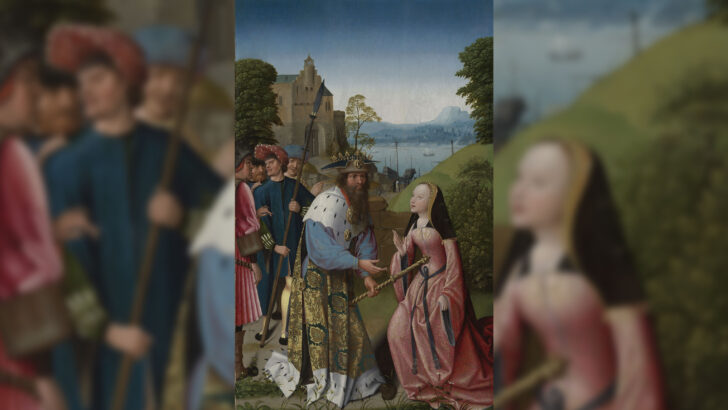Crazy about Dymphna: The Story of a Girl who Drove a Medieval City Mad, by Sven Van Dorst and others (Antwerp: Hannibal Publishing / Phoebus Foundation, €63.25/£55.00) Exhibition in the National Gallery of Ireland, runs until May 28
Davnet and Dympna: a single cult, by Seosamh Ó Dufaigh (Clogher Historical Society, €30.00)
In 2016, the Phoebus Foundation, a trust from the collection and preservation of Belgian art, undertook a large-scale restoration project focused on an altar screen by Goossen van der Weyden (1455-1543) in their collection. This creation with a remarkable historical connection with Ireland, is now on exhibition in Dublin.
It will be of very special interest to anyone interested in the history of the cross-border Clogher region. It will also engage the attention of hagiologists, indeed of anyone at all interested in early and medieval religion, through its revelation in physical form of the strange permutations of Irish religious tradition in a wider European context.
Hagiology
St Dympna through her cultus casts light on the complicated and often opaque hagiology of early Christian Ireland. But her real fame is in Belgium, in the city of Geel, where the saint herself is now more honoured as the patroness of the mentally ill than she is in Ireland (hence the spelling variations in her name).
Here in Ireland Dymphna is a legendary sixth or seventh Century Irish saint who was the daughter of a Celtic king. Her story as presented in this show relates that when Dymphna grew to resemble her mother, her widowed father decided to marry her himself – this was an Ireland still partly pagan.
To escape his incestuous intentions, Dymphna fled Ireland to Geel in Belgium, with her personal priest confessor Gerebernus. Dymphna’s father pursued and killed them, and their bodies were buried on the spot by angels.
The Church of St Dymphna in Geel, consecrated in 1247, still holds relics associated with the saint. The altarpiece featuring scenes from the life of St Dymphna is the only work of its kind to focus on the life of an Irish saint.
This time last year (in the issue of 24 February 2022) we reviewed in these pages Davnet and Dympna: A Single Cult by Sesame Ó Dufaigh (Clogher Historical Society, €30.00; website: www.clogherhistory.ie). The author is perhaps more widely known as Bishop Duffy.
In his large book Duffy investigates the saint with scholarly detail. It is beautifully illustrated, and a prime example of what local history in Ireland can achieve. It will give visitors to this exhibition a larger and more detailed insight into the very complicated legendary and historical background of the saint.
Devotion
He discusses the devotion to the saint that developed in Belgium as an extension of the Irish cultus. But in becoming naturalised in Europe St Dympna took on a new aspect.
This is a reminder to us how the traditional ideas about our saints can change with translocation in curious and interesting ways. I suspect that St Dympna/Dymphna deserves more attention from our own historians, to explore further the ground broken for cultivation by these two books and the restoration of the Geel altarpiece.
Sven Van Dorst and the Belgian team take an up-to-date view of the saint’s relevance. “The story of Dymphna sounds like a fairy tale,” they write, “but if you read between the lines it’s more relevant than ever before. It’s about incest, #MeToo, the right to self-determination, emancipation, corruption, the refugee problem, in short, Dymphna is timeless.”
The catalogue of the exhibition, an elaborate compendium of articles by Sven Van Dorst and others involved in the project is available in the Gallery Shop (or from the online shop, see nationalgallery.ie).


 Peter Costello
Peter Costello Goossen Van der Weyden, Dymphna’s Father Proposes to Her. The Phoebus Foundation.
Goossen Van der Weyden, Dymphna’s Father Proposes to Her. The Phoebus Foundation. 